
Former President Barak Obama give birth to criminal justice reform. President Trump along with a bi-partisan group of Democrats and Republicans so far has contributed life support to criminal justice reform, but the voting citizens, the state legislature, the Governor, the Parole Board, the state agencies, and the non-profit community of a state have shown America what real criminal justice reform looks like.
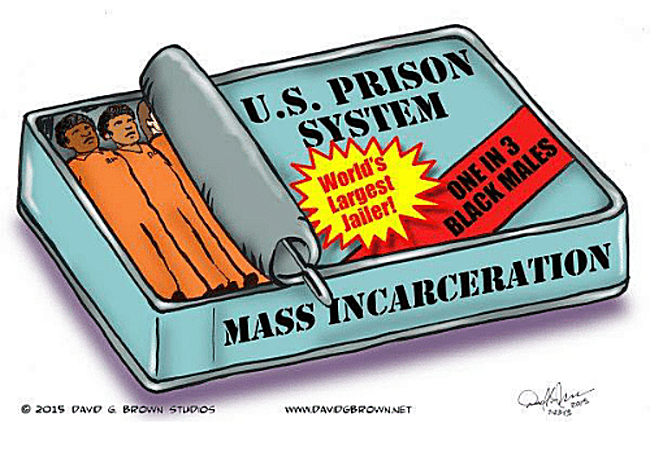
America’s population of 329,064,917 people is only 5% of the world’s population, and America’s population of 2,193,798 people locked up in prison is 25% of the world’s prison population. This makes America #1 with the highest incarceration rate of all other countries in the world. This fact alone justifies why America needs criminal justice reform, but there are 3 additional reasons why criminal justice reform is a must-do in America. They are:
#1 Prison Overcrowding
With over 2 million Americans in prison and another 5 million released on parole or probation means that for every 31 adults one will wind up in jail. This places an undue burden on tax payers and the federal government’s ability to pay the cost for all of these majority non-violent drug related or mental illness prisoners. Overcrowding, according to Penal Reform International is the consequence of our criminal justice policies rather than an increasing crime rate.
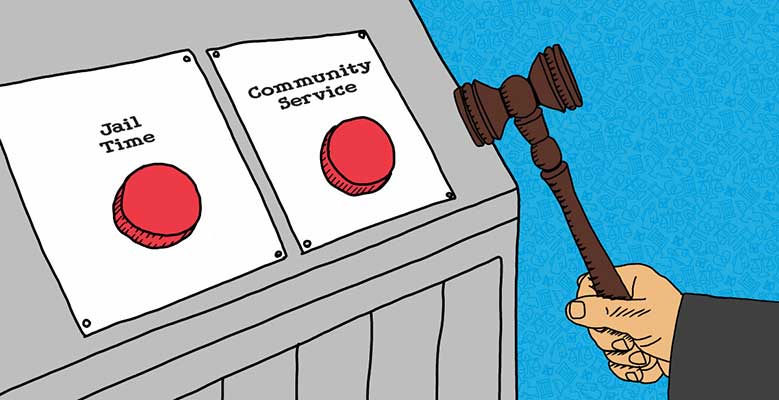
According to one study, if prosecutors sent just 10% of eligible non-violent state offenders to community-based treatment programs instead of prison, it would save states $4.8 billion in criminal justice cost.
#2 Mandatory Minimum Sentencing Laws
Mandatory sentencing laws take away the power of a presiding judge to account for the particular circumstances surrounding a case or the character of the defendant. Prosecutors unfairly use these laws to their advantage, sometimes threatening defendants with longer sentences in an attempt to secure a guilty plea in exchange for a reduced sentence. Federal drug laws and their mandatory sentencing account for the longest maximum sentences of any crime a person could commit, with some reaching up to 40 years or life in prison. They hit low-level non-violent drug offenders with harsh sentences and laws stacked up against people of color, drug addicts, and the poor who can’t afford legal representation. Based on the inability of lower level offenders to trade vital information on criminal organizations, many people don’t stand a chance whether they committed the crime or not. Most experts agree that’s why every year over 90% of federal drug defendants plead guilty.

Mandatory Minimum Sentencing Laws makes the prosecutor the most powerful person not the Judge because mandatory sentences takes away the Judge’s discretion in handing down prison sentences
#3 Racism in the American Prison System
According to the Pew Research Center, in 2016 the racial demographics were as follows:
- American Blacks represented 12% of the US population, but 33% of the prison population
- Caucasians accounted for 64% of the population, but only 30% of those in prison
- Hispanics held 16% of the nation’s population, but over 23% of prison inmates
In America, people of color are incarcerated in state and federal prisons across the country at higher rates than white people, with American Blacks landing in prison at more than five times the rate of white people. In the following five states, states with predominately white communities, this number jumped to a rate of 10 to one in Iowa, Minnesota, New Jersey, Vermont, and Wisconsin. Oklahoma, which is the state with the highest black incarceration rate in the nation, holds more than one in every 15 black males over the age of 18 in prison. The American Civil Liberties Union (ACLU) says a black person is 3.73 times more likely to be arrested for possession of marijuana when compared to a white person, despite the fact that the use of marijuana by both races is the same. According to the Pew study, Hispanics and Latinos in the US are imprisoned at 1.4 times the rate of whites, but American Blacks are still more than twice as likely to wind up in prison than Hispanics or Latinos.
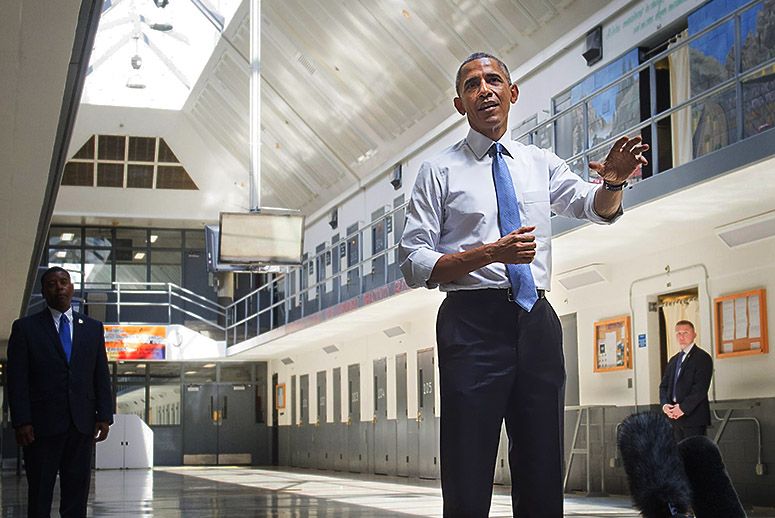
President Obama is the first President in American history to visit a federal prison, here he tours the El Reno Federal Correctional Institution in El Reno, Oklahoma in 2015. (Photo: Saul Loeb/Getty Images)
Former President Barak Obama was the first president to go beyond rhetoric and take concrete steps to bring about criminal justice reform. By the end of his second term, Obama had used his presidential power to grant pardons and commutations of sentences to 1,927 individuals convicted of federal crimes. Of those 1,927 acts of criminal justice reform, 1,715 were commutations of sentences (including 504 life sentences) and 212 were pardons.
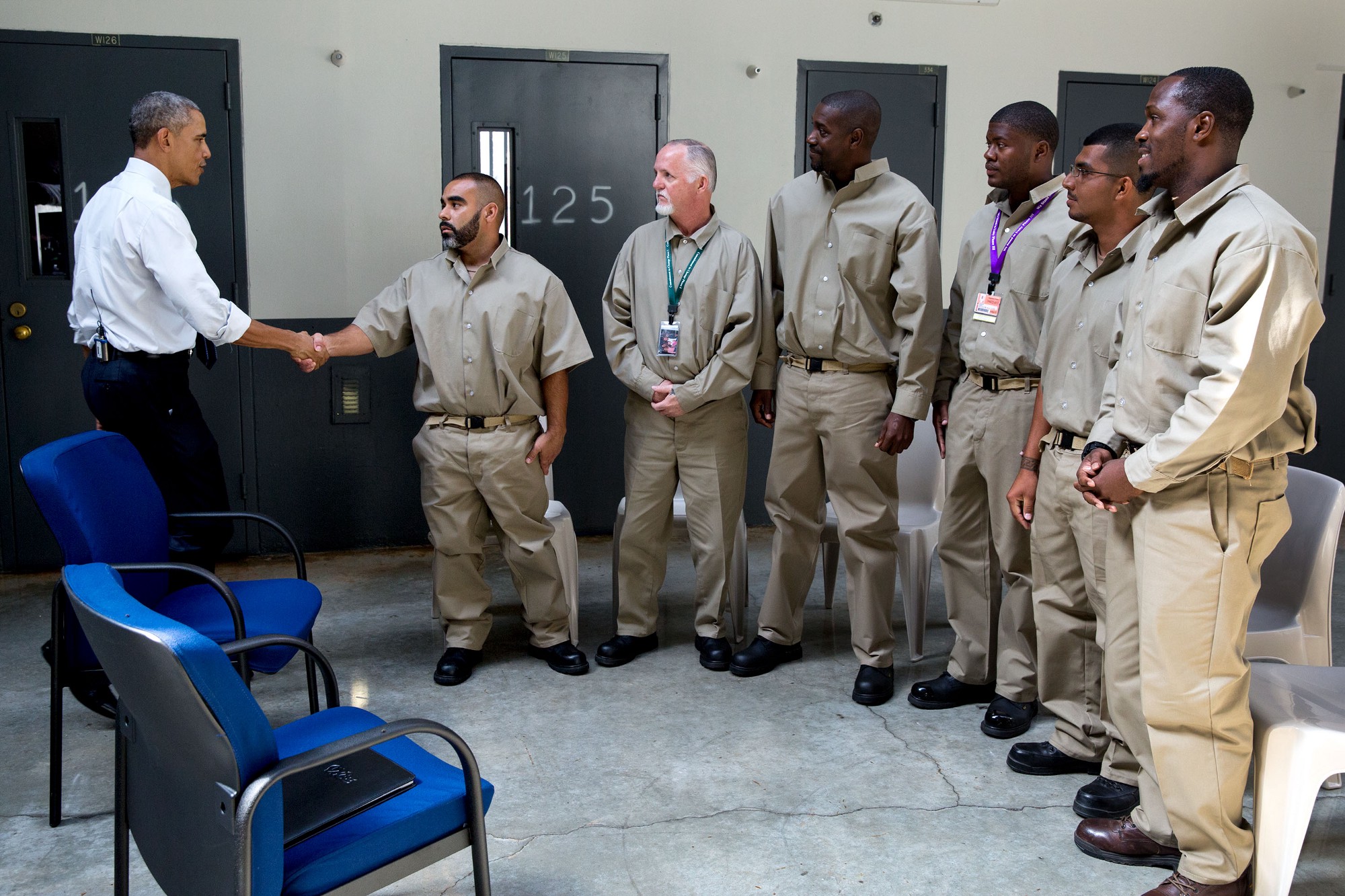
President Barack Obama meets with prisoners at El Reno Federal Correctional Institution in 2015, he is the first President in American history to meet with convicted felons at a prison
The 1,715 commutations he granted total more commutations than the combined total commutations of the 13 presidents that served before him, he also holds the record for the largest single-day use of a president’s clemency power by granting 330 commutations on January 19, 2017, his last full day in office. The vast majority of the pardons and commutations Obama granted were for non-violent drug related charges.
Last December President Trump signed crucial bi-partisan criminal justice reform legislation, the First Step Act, into law. The goal of this criminal justice reform law is to shorten sentences and expand job training and reentry into society programs for prisoners. As a result in July, Justice Department officials announced that 3,100 inmates were being released from federal prisons across the country because of a change in how their good behavior time is calculated.
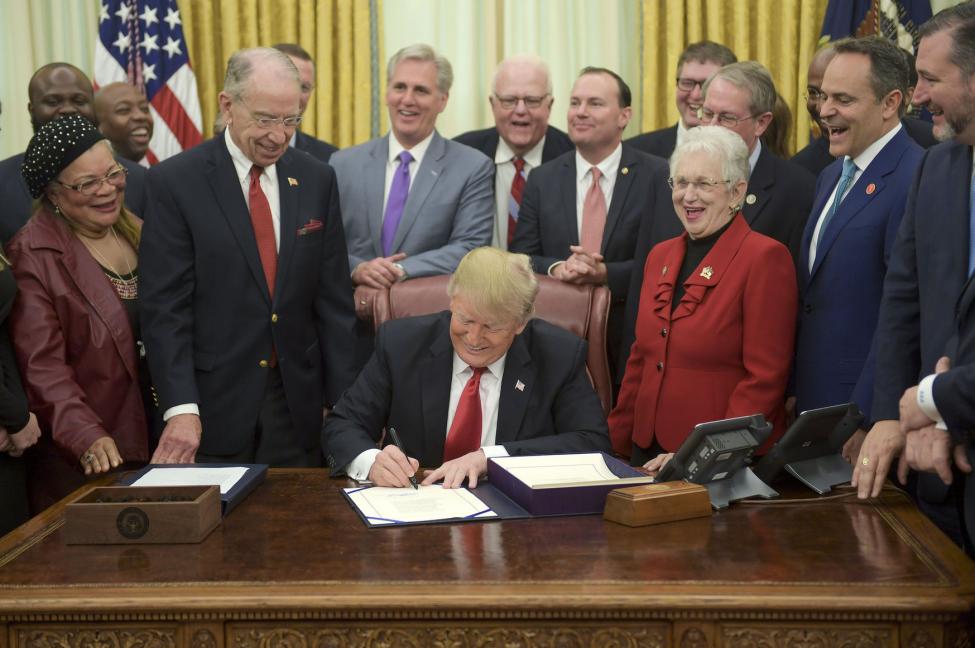
President Trump signs the First Step Act in the Oval Office at the White House. Photo by Leigh Vogel/UPI
The largest portion of the 3,100 inmates released were drug offenders with a smaller portion convicted of weapons offenses, sex offenses, robbery offenses, and national-security-related crimes. In accordance with the First Step Act’s goal to retroactively resolve the racial disparity between penalties for those convicted of possessing crack cocaine and those convicted of possessing powder cocaine, the Justice Dept. said 1,691 people convicted of crack cocaine offenses received sentence reductions.
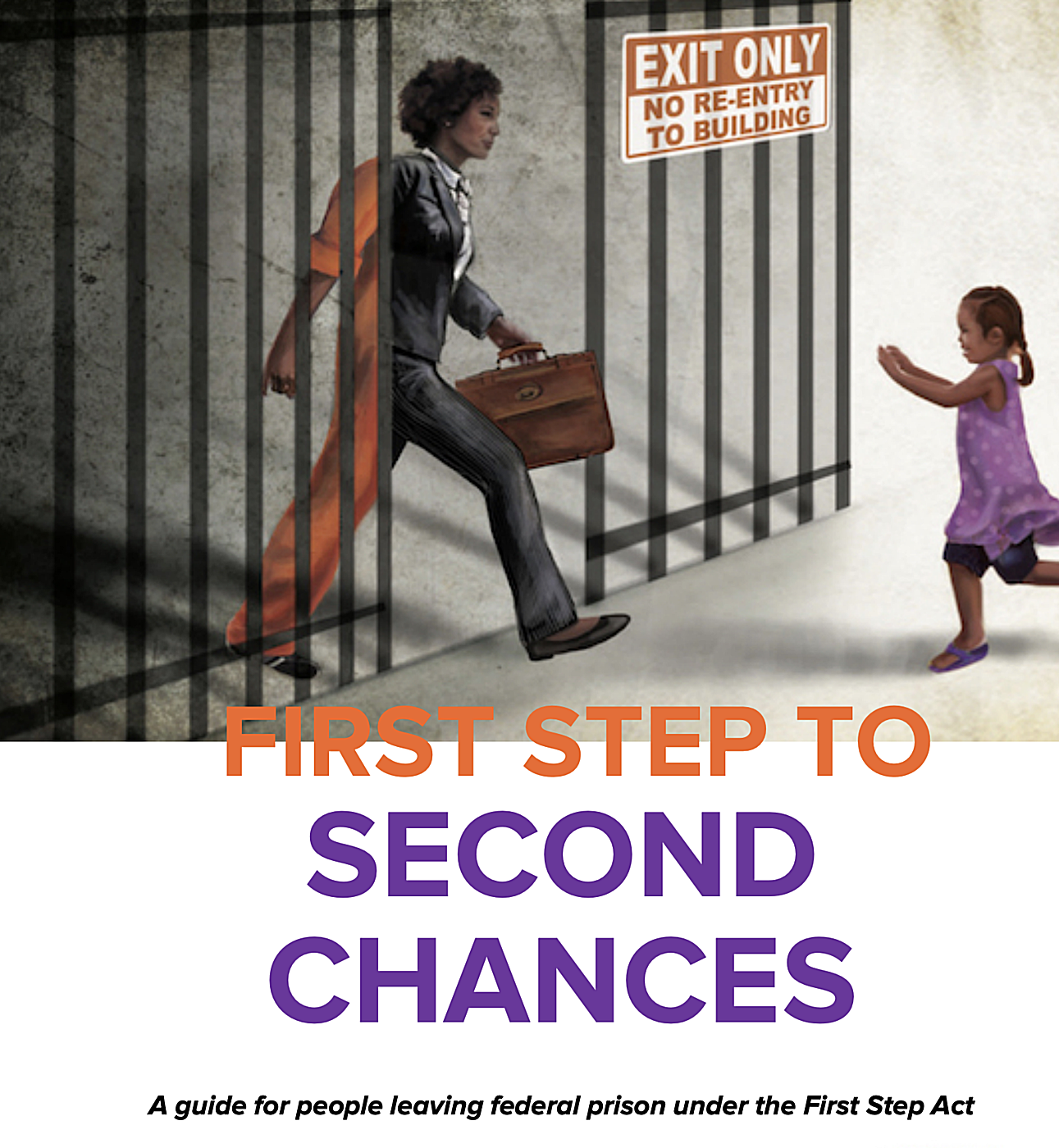
The criminal justice reform that started with former President Obama and continued by President Trump and a bi-partisan group of Democrats and Republicans, has now trickled down to America’s #1 state incarcerator of prisoners, the state of Oklahoma. In 2016 Oklahoma citizens voted in a referendum to reclassify certain property offenses and drug related offenses from felonies to misdemeanor crimes. Specifically the 58% yes vote meant 2 things: 1) possession of any drugs was reclassified as a misdemeanor while manufacturing, trafficking, or selling any drugs remain felony offenses and 2) the felony charge of theft or forgery of property worth over $500 dollars was changed to make it a misdemeanor, while theft or forgery of property over $1,000 dollars is a felony.

Oklahoma Gov. Kevin Stitt speaks at a news conference Nov. 1, 2019 in Oklahoma City to announce that Oklahoma will release more than 400 inmates after the Oklahoma Parole Board approved what they say is the largest single-day mass commutation in U.S. history. (AP Photo/Sue Ogrocki)
The Oklahoma State Legislature made the changes to the law that their citizens voted for, and the state legislature also followed the lead of the federal government and made the changes retroactive to prisoners already serving time. As a result of this criminal justice reform law yesterday 462 non-violent prisoners walked out of prison. 75% were men, 25% were women, and the average age of the freed prisoners was 39.
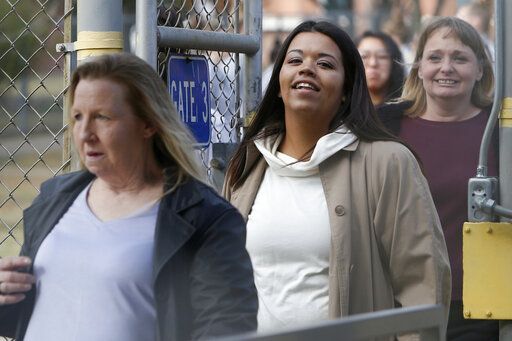
Inmates being released from the Eddie Warrior Correctional Center walk through the gate at the prison, Monday, Nov. 4, 2019 in Taft, Okla. More than 450 inmates walked out the doors of prisons across Oklahoma on Monday as part of what state officials say is the largest single-day mass commutation in U.S. history. Associated Press
But Oklahoma showed America what real criminal justice reform looks like by going a step further than any government or public official has gone. The Oklahoma criminal justice reform law not only freed prisoners but it also removed the felony from their records, meaning not only did 462 people leave prison free of the law but also free of a felony on their record. Having their records expunged of a felony improves their chances by 100% of getting employment and successfully rejoining society as a productive citizen.
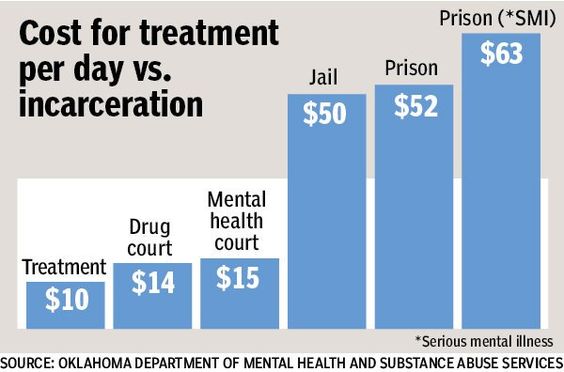
One of the main reasons Oklahoma citizens voted for criminal justice reform was because it made good economic sense saving millions of dollars
In another step to show what real criminal justice reform looks like and to insure a successful transition back into society the governor’s office, the Oklahoma Pardon and Parole Board, dozens of Oklahoma nonprofits, and the Oklahoma Department of Corrections held its first ever transition fairs for inmates’ at 28 prison facilities across the state. More than 200 people from 45 community partners, nonprofits, and state agencies attended. These first ever transition fairs connected inmates with the services they would need once released, services like transferring inmates’ trust account money to debit cards, preparing the necessary inmate discharge medications, and arranging for recommended inmates to have a valid state-issued driver’s license or state-issued ID prior to releasing them from prison.
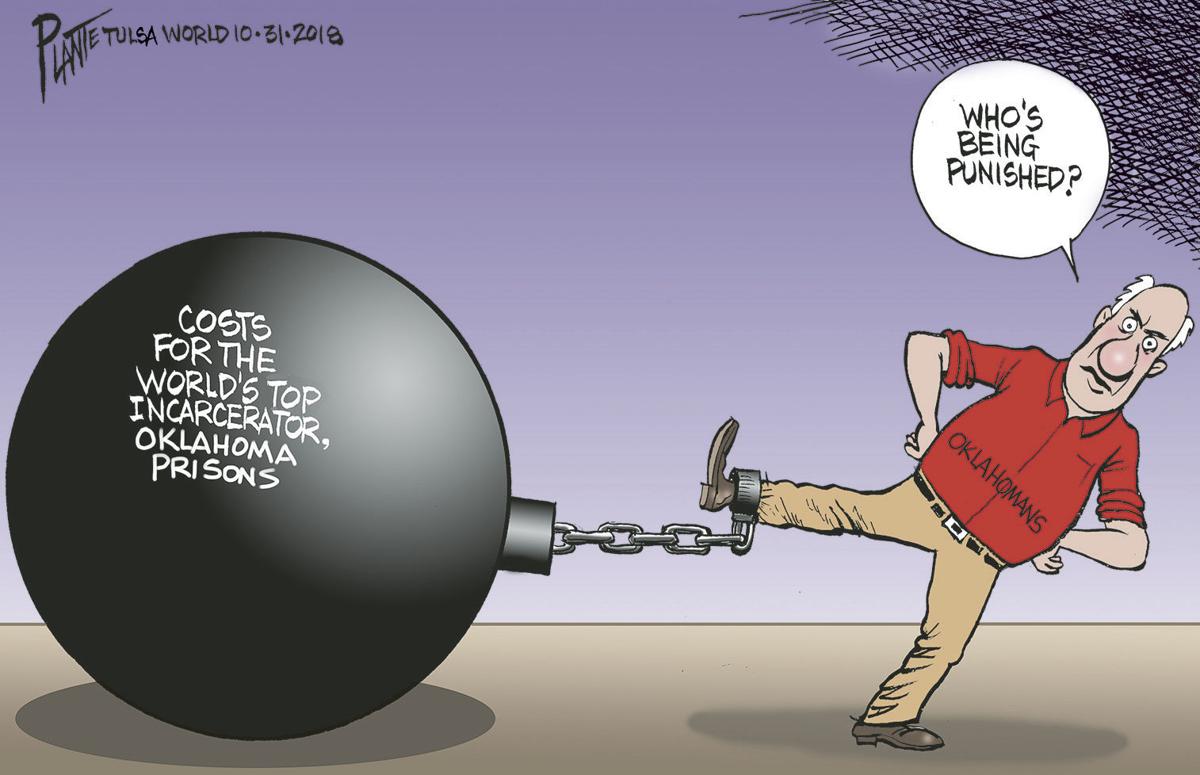
It’s time for President Trump, Democrats, Republicans, the federal government and the remaining 49 state governments to realize what Oklahoma has demonstrated, that real criminal justice reform is more than giving non-violent offenders early release from prison.
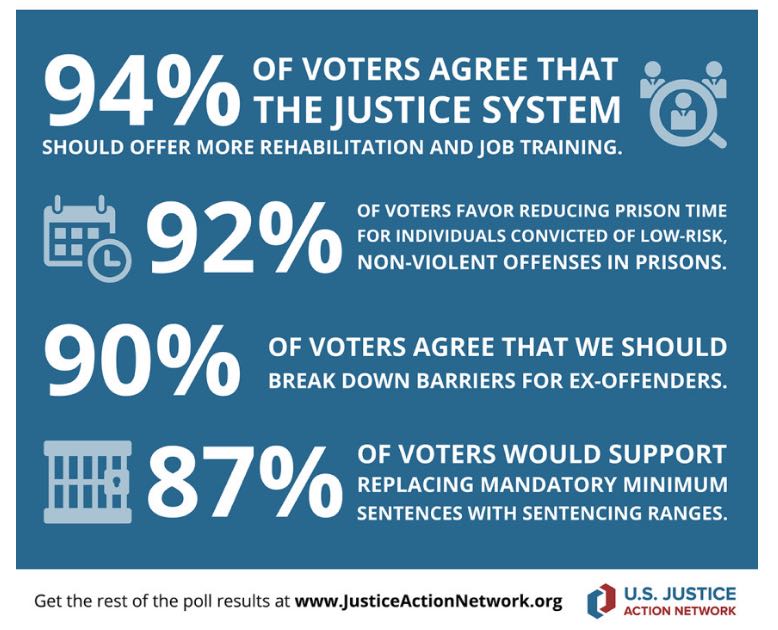
Real criminal justice reform is also expunging a former prisoner’s record, equipping them with a bridge to employment, help with finding housing if needed, issuing them a valid driver’s license or state identification card and easy access to their medical records. In other words, all the things their unnecessary imprisonment robbed them of, only then can criminal justice reform be REAL!!!

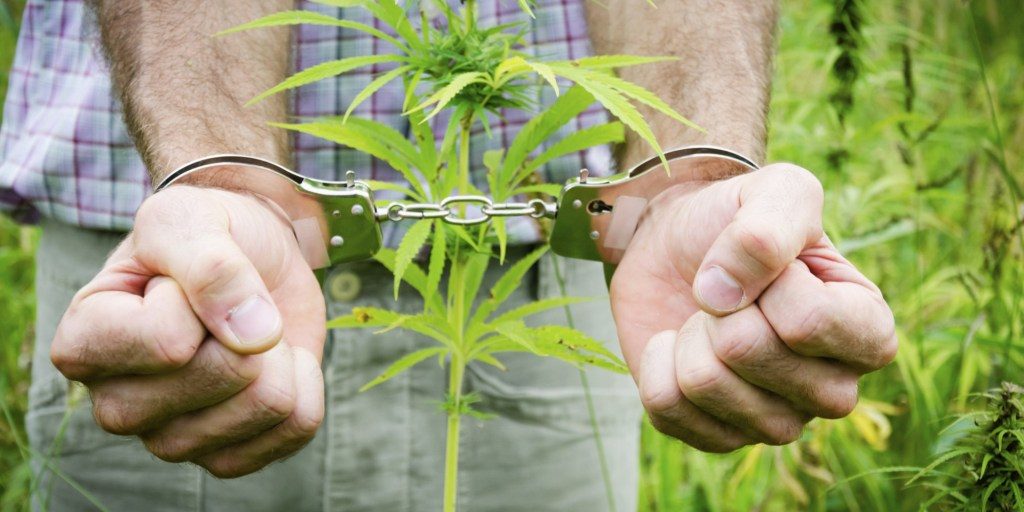
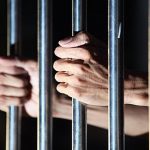

Leave a Reply